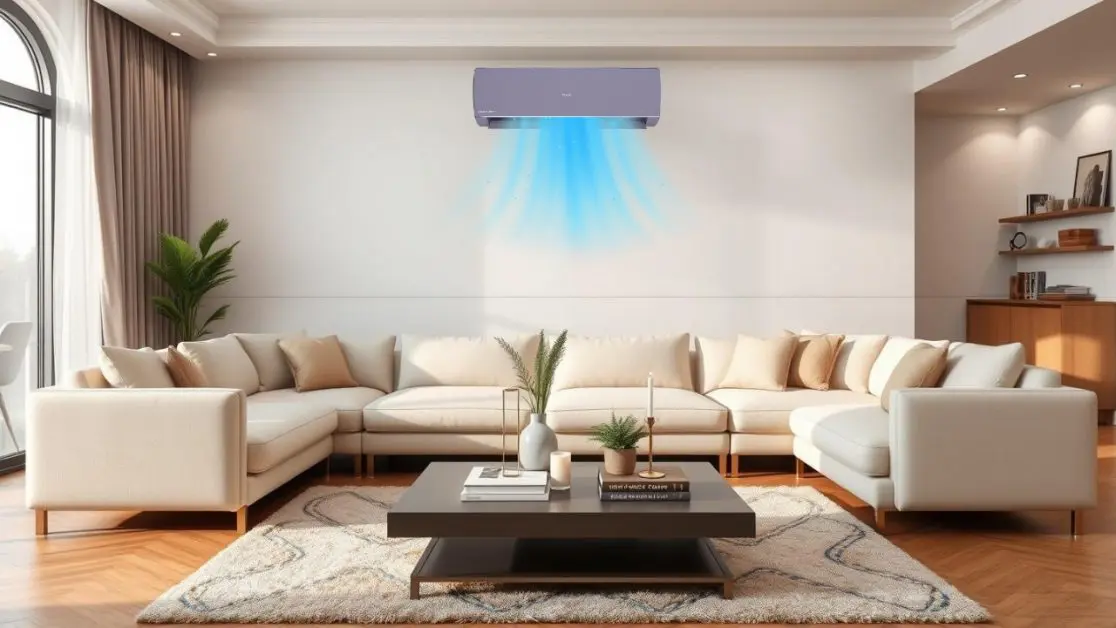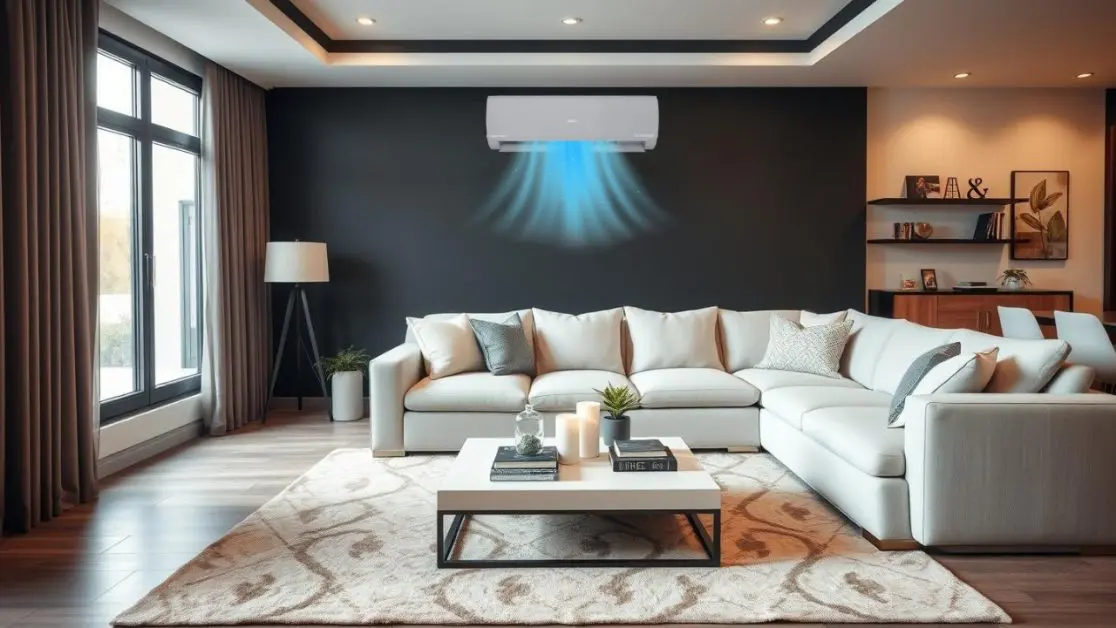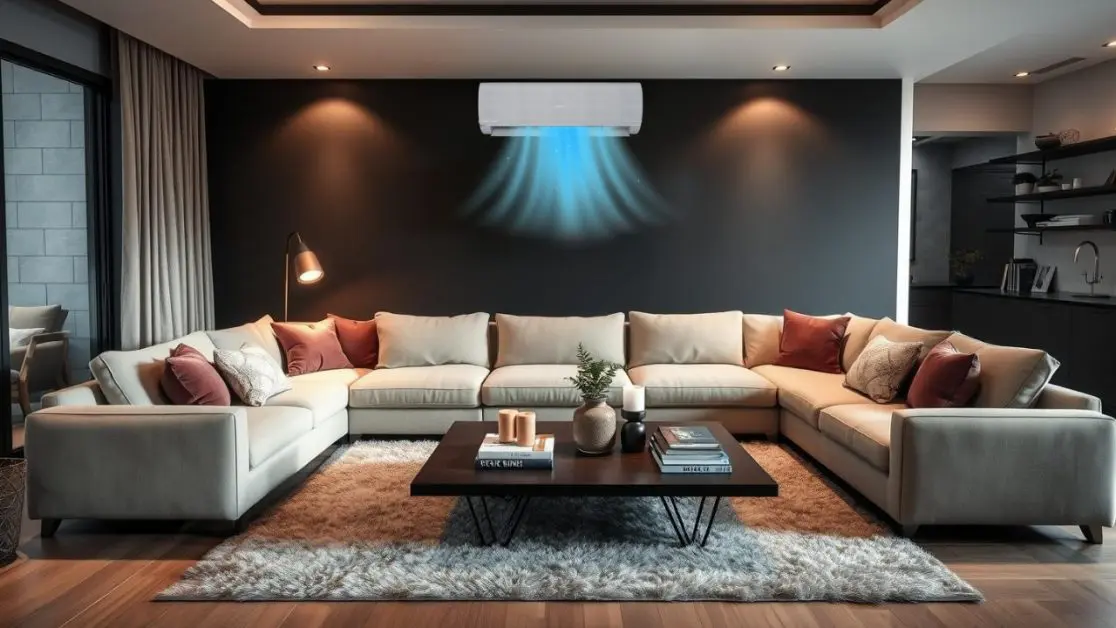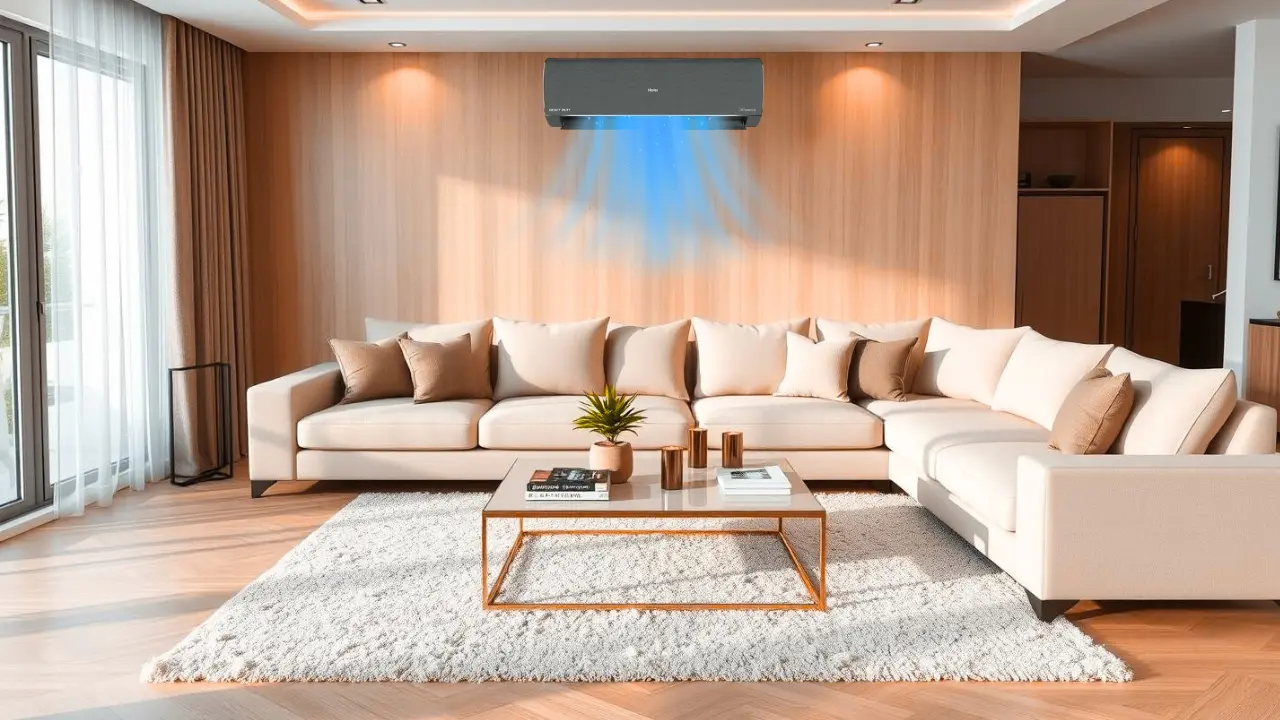Hey, ever walked into a big room and felt like some spots are freezing while others are still hot? That’s a real pain, right?
It’s super common in places like big offices, halls, or even those cool open-plan homes. You know, where regular ACs just can’t seem to reach everywhere.
Well, there’s a solution! It’s called a long-airflow AC. These guys are built to push cool airfare and evenly, so everyone’s comfy, no matter where they’re sitting. Plus, they can actually save you money on energy bills!
The Science of Airflow and Its Influence on Thermal Efficiency

Air conditioning systems require proper airflow beyond their tonnage ratings to effectively cool extensive areas. An AC unit needs sufficient airflow to prevent temperature irregularity and high energy costs.
Key Factors That Influence Airflow
- Air Throw Distance: Ensures full-scale cooling coverage and prevents unwanted stagnation in operating areas.
- Correct Airflow Circulation: Stops temperature disparities and produces uniform cooling across the entire space.
- Evacuation Speed: Interior design elements, such as decorations and architectural components, affect airflow movement.
- Fan and Blade Design: High-speed rotating fans with well-designed blades improve airflow efficiency for wide area distribution.
Why Long-Airflow ACs Are Necessary for Large Spaces

1. Maintains Evenly Cooled Temperatures
Uneven cooling in big areas occurs when some locations remain hot while others become excessively cold. Inadequate airflow creates this problem as cool air is not distributed properly. High-airflow ACs establish long-range cool air transfer, ensuring consistent and balanced temperatures across the entire area.
2. Reduces Energy Consumption
Power distribution is a primary concern when cooling extensive areas. An AC requires additional power when it fails to move air efficiently, leading to higher energy consumption. High-airflow systems optimize air distribution, reducing strain on the compressor and lowering electricity usage.
3. Prevents Stagnant Air and Excessive Moisture Accumulation
Restricted airflow in large areas leads to air stagnation and the formation of humid conditions. Poor airflow creates discomfort and promotes mold growth and musty odors. Long-airflow ACs continuously circulate fresh air, maintaining healthy indoor environments.
4. Enhances Comfort in High-Traffic Areas
High-traffic areas, such as workplaces and conference venues, generate rising indoor temperatures due to a steady flow of people. Long-airflow ACs maintain consistent airflow, ensuring comfort as heat levels fluctuate.
5. Designed for Large, Open-Plan Spaces
Traditional air conditioners were developed for confined spaces with restricted airflow. long-airflow AC models are specifically designed for open spaces, utilizing advanced fan motors and blade technology to generate powerful air currents for efficient cooling.
Key Features Enhancing Long-Airflow AC Performance

Modern air conditioning technology incorporates specialized features to enhance the effectiveness of Long-airflow systems in spacious areas.
1. Supersonic Cooling for Instant Relief
The latest Long-airflow AC units provide instant cooling through precise fan speeds and maximum cooling performance. These systems can cool an area within 10 seconds, making them ideal for large spaces.
2. Long Air flow for Extended Coverage
Long-airflow ACs use powerful fans and wide vents to distribute air effectively across large areas. This eliminates the need for multiple AC units in spacious rooms.
3. Advanced Inverter Technology for Faster Cooling
Many modern Long-airflow AC units incorporate inverter technology, enabling rapid adjustments in cooling power. This ensures quick temperature drops while maintaining stable conditions without significantly increasing energy costs.
4. Humidity Control and Air Purification
Indoor air quality is as important as temperature control in large spaces with multiple occupants. Some air conditioning units feature high-end filtration and moisture regulation systems, improving overall air quality.
5. Smart Modes for Flexible Operation
Advanced air conditioning systems allow users to choose from various cooling modes that adjust settings based on occupancy levels and time of day. These smart features optimize energy efficiency while maintaining comfort.
Choosing the Right Long-Airflow AC for Your Space
Selecting an ideal Long-airflow AC requires evaluating airflow performance, cooling capacity, and energy efficiency. Several critical factors must be considered:
| Feature | Why It Matters |
| Airflow Rate (CFM) | Ensures cool air is evenly distributed. |
| Cooling Capacity (Ton) | Determines the AC’s ability to cool large spaces. |
| Energy Efficiency (Star Rating) | Impacts long-term energy costs. |
| Fan Speed Options | Offers adjustable cooling settings. |
| Noise Levels | Important for quiet environments like offices. |
Conclusion
Long-airflow air conditioners are the most effective solution for cooling large spaces. These systems ensure temperature uniformity, reduce power consumption, and prevent stagnant air, providing superior comfort in difficult-to-cool areas.
At Haier India, customers can find reliable, energy-efficient cooling technology with advanced Long-airflow AC systems. The latest Haier models offer upgraded cooling capacity, making them ideal for large rooms.

